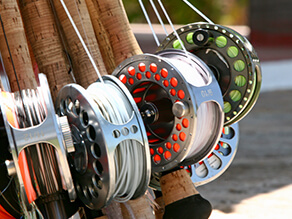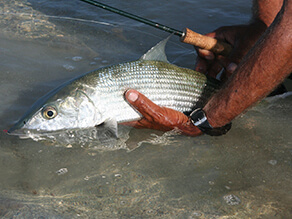






The 9/11 tragedy has completely altered the traveling landscape for all of us, regardless of whether we’re flying domestically or internationally to fish. The fact that many of us are also traveling with rod cases and sometimes bulky fishing equipment (read suspicious) adds more eyeballs on us and often puts a target squarely on our backs as far as airport security is concerned. This is our reality as traveling anglers and we need to adapt and adjust to this situation. Everything at the airport simply takes much longer than it used to, particularly the security screening process and this isn’t going to change for the better any time soon. Fortunately, there are some things that you can do to speed things up at the security line, both for yourself and for those behind you.
I always want things to go quickly and efficiently when I’m traveling through an airport. And I don’t want to be “that guy” who holds everyone else up behind me at the security check point so I make it a point of “traveling clean”. What I mean by this is that I know exactly what I am traveling with on my person and in my carry on, before I leave for the airport. Just spending a couple of minutes before hand will help eliminate potential surprises, which can in turn save you a lot of time and grief at the airport.
I travel with a knap sack that I often use in my daily life and so before packing it with the things I need for my trip, I clean it out thoroughly. I make sure that there are no coins, pocket knives, matches or anything with a sharp edge or point to it. I also re familiarize myself what I can bring on board and perhaps more importantly, what I can’t bring on board the plane with me. The TSA web site is very clear on prohibited items and I’ve included a link to that particular section of the TSA web site, which will prove very handy prior to your next trip. Even if you’re from the UK or Canada, the TSA site is very good and serves as an excellent resource base for what not to bring with you on your next flight.
Visit : www.tsa.gov
Just a little pre planning and some common sense will often go a long way towards ensuring a quick and hassle free experience the next time you are at an airport security checkpoint.
BEFORE YOU GET TO THE AIRPORT
- If you plan on locking your luggage, make sure to use a TSA approved lock
- Make sure that you are not carrying any lighters or matches on your person.
- Wear proper footwear for the trip that is both comfortable and easy to take on and off at the security checkpoint.
- Don’t wear clothing on your travel day that has a lot of metal buttons, clasps or fasteners.
- Avoid wearing a lot of jewelry.
- When possible, check in online.
- Have a small bag or pouch handy where cash, coins and jewelry can easily be put inside it. Make sure that this small bag is in your carry on.
- Have all camera and video gear securely placed in your carry on where it is easily accessible.
- Bring sunglasses to block out bad fluorescent lighting at the airport and earplugs to block out terminal noise.
- Place your laptop in your carry on where it’s both easy to take out and put back in.
- Know what you can and cannot bring in carry on by spending a couple of minutes on the TSA web site.
- Be early.
- Understand the 3-1-1 rule and abide by it. Yes, the 3-1-1 rule for carry-on liquids – the one that limits all passengers to one quart-sized zip-top bag of liquid toiletries of no more than 3.4 ounces each is still in effect. To keep things moving quickly, make sure to place your zip-top plastic bag in an accessible place within your carry on so you can easily take it out of your baggage and put it in a bin during screening.
WHEN YOU ARE AT THE AIRPORT
Being ready and properly prepared to go through the security screening process will save you both time and aggravation.
- Have both your government issued ID (a passport is by far the best document to carry and in many instances the only ID accepted) and your boarding pass either in your hand or somewhere on your person that you can access quickly.
- Have all items out of your pockets and securely stored in your carry on. This is where a small bag or pouch comes in handy. Keys, change, money clips, cell phones and PDA’s, business card holders etc, all need to be removed from your person when you are about to go through security screening and X rays.
- All cameras, video gear and laptops should be taken out of their respective carrying cases and put in the plastic bins provided by security.
- Be ready to easily remove belts and shoes.
- Remove all outer layers of clothing, including sweaters, jackets and sport coats.
